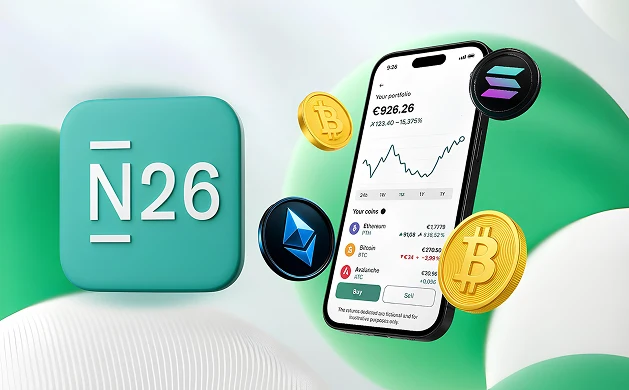Best Layer 2 Crypto Networks in 2025

Summary: Ethereum's blockchain trilemma (balancing decentralization, scalability, and security) has spurred the development of dozens of Layer 2 (L2) networks to scale the network.
Along with Ethereum-focused networks, Bitcoin and Solana are now also advancing their own L2 technologies, broadening the potential of their networks. Here is a quick look at the top five Layer 2 projects in 2025:
- Base - Best Ethereum Layer 2 Overall
- Arbitrum (ARB) - Top L2 For Decentralized Apps
- Optimism (OP) - Leading Cross-chain Ethereum L2
- Stacks (STX) - Top Bitcoin Layer 2 For Smart Contracts
- Eclipse - Hybrid Ethereum L2 using Solana's VM
L2BEAT offers the most comprehensive data on Ethereum Layer 2 networks, tracking security, decentralization, and Total Value Secured (TVS).
Core Focus
Security analysis, decentralization metrics, Total Value Secured (TVS)
Supported L2s
Optimistic Rollups, zkRollups, Validiums
Platform Cost
Free to access, open-source data
Top Layer 2s Across All Blockchains
Evaluating Layer 2 networks requires a deep understanding of technical metrics, user behavior, and on-chain performance during periods of high congestion.
With Ethereum's Layer 2 ecosystem densely populated and Bitcoin and Solana Layer 2 solutions still emerging, our analysis identifies the projects that offer good investor incentives.
Below is a breakdown of key metrics for the leading Layer 2 networks today:
1. Base
Base is a builder-friendly Ethereum Layer 2 network developed by Coinbase that includes advanced developer tools and ultra-low transaction costs. Base leverages the OP Stack and offers a near-native Ethereum experience with low-cost, rapid transactions and strong developer tooling.
The network supports advanced features such as account abstraction, smart wallets, and gasless transactions that streamline user interactions. Unlike other L2s, Base has more active developers in North America than any blockchain except the Ethereum and Solana layer 1s.
Powered by Coinbase's trusted infrastructure, Base simplifies the process of onramping users and assets from Ethereum L1 and other interoperable chains. Its promise of 1-second transactions at less than a cent reinforces Base's commitment to onboaring one billion users onchain.
- Chain: Ethereum
- Active Users: 6.6 million
- Top Protocols: Aerodrome (DEX), Morpho Blue (Lending), Pendle (Yield)
- Token: The project is still tokenless

2. Arbitrum
Arbitrum Arbitrum scales Ethereum by batching hundreds of transactions into a single submission, effectively lowering the cost and computational burden on the main chain. Developers can also launch their own L3s, known as Orbit chains, providing flexibility for tailored security and cost profiles.
Arbitrum offers a multi-chain approach that allows developers to choose the level of decentralization and cost structure that best fits their applications. The two primary options are Arbitrum One, which delivers full rollup security, and Arbitrum Nova, an AnyTrust chain optimized for lower fees.
With a TVL of $2.7 billion and a diverse array of DeFi applications, from decentralized exchanges to yield aggregators, Arbitrum stands as the largest L2 by value locked, while the Arbitrum DAO governance token ARB holds a market capitalization of about $2 billion.
- Chain: Ethereum
- Active Users: 1.2 million
- Top Protocols: Aave (Lending), GMX (Derivatives), Uniswap (DEX)
- Token: $ARB at a market cap hovering around $2 billion

3. Optimism
The Optimism layer 2 is pivoting toward a Superchain architecture, which envisions a unified network of OP Chains sharing bridging, decentralized governance, and upgrades. Currently, there are 30 layer 2s in the Superchain, including Kraken's Ink, Sony's Soneium, Mode, and World.
The upgrade path includes transforming the Bedrock bridge into a chain factory to deploy OP Chains deterministically. Additionally, it will introduce permissionless withdrawal claims and modular sequencing for configurable validators, enabling horizontal scaling across multiple interoperable chains.
The Optimism Superchain framework provides developers with standardized tools, making cross-chain dApp building easier than ever. Although still an in-flight project, the Superchain represents a major step toward delivering scalable, decentralized compute for the future of web applications.
- Chain: Ethereum
- Active Users: 70,000 (on OP mainnet)
- Top Protocols: Synthetix (Synthetics), Velodrome (DEX), Compound (Lending)
- Token: $OP at a $1.2 billion market cap

4. Stacks
Stacks is a Bitcoin layer 2 that adds DeFi functionality by enabling smart contracts and decentralized applications while ultimately settling on Bitcoin. It separates scalability and functionality from Bitcoin’s core properties, ensuring that decentralization, immutability, and security remain intact.
Stacks' Nakamoto Upgrade is a hard fork that decouples block production from miner elections, reducing transaction confirmation times to seconds. It anchors the Stacks L2 to Bitcoin by preventing forks and mitigating miner extractable value and strengthening resistance to chain reorganizations.
The sBTC token is a SIP-010 asset on the Stacks blockchain that maintains a 1:1 peg with Bitcoin, allowing BTC holders to participate in DeFi without leaving the Bitcoin ecosystem. The token provides a secure and efficient bridge between Bitcoin and smart contract applications on Stacks.
- Chain: Bitcoin
- Active Users: 40,000
- Top Protocols: Zest (Lending), StakindDAO (Liquid Staking), ALEX (DEX)
- Token: STX at a $1.3 billion market capitalization

5. Eclipse
Eclipse mainnet is Ethereum’s first Layer 2 running on the Solana Virtual Machine. It settles transactions on Ethereum using ETH, posts information to Celestia for scalable data availability, and uses RISC Zero for zero-knowledge fraud proofs.
A built-in validating bridge and the requirement for nodes to run a full Ethereum node ensure accurate transaction sequencing, maintain chain integrity, and provide censorship resistance. These features tie Eclipse’s security to Ethereum while allowing fast, parallel execution.
Eclipse supports Ethereum Virtual Machine compatibility through Neon EVM, Solang, and MetaMask Snaps, enabling a familiar developer experience. Its design also incorporates local fee markets and efficient state management, positioning Eclipse as the top hybrid L2 on Ethereum & Solana.
- Chain: Ethereum/Solana
- Active Users: 300,000
- Top Protocols: Orca (DEX), Save (Lending), Astrol (Lending)
- Token: No governence token for now

What is an Ethereum Layer 2?
An Ethereum Layer 2 is a protocol built on top of Ethereum that processes transactions off the main chain while periodically committing data back to it. This approach improves scalability and lowers fees while maintaining Ethereum’s security and decentralization.
There are two primary types of rollup-based Layer 2s:
- Optimistic Rollups: Assume transactions are valid unless proven otherwise with fraud proofs. Examples: Optimism, Arbitrum, Base, Blast, Zircuit, Mode.
- ZK Rollups: Generate a cryptographic zero-knowledge proof for every transaction to verify its validity immediately. Examples: ZKsync, Scroll, Starknet, Linea, Polygon zkEVM.
Base, Arbitrum, and Optimism are the leading L2 networks on Ethereum. However, Taiko Alethia is gaining attention for its flexible design, which can operate as either an optimistic or a ZK rollup, further reducing transaction costs while preserving Ethereum’s core properties.

What is a Bitcoin Layer 2?
A Bitcoin Layer 2 is any off-chain network built on top of Bitcoin that extends its capabilities, either boosting transaction throughput, lowering fees, or enabling smart contracts functionality while inheriting Bitcoin’s security.
The most popular Bitcoin L2s right now are:
- Lightning Network: A payment channel network that enables near-instant micropayments off-chain at minimal fees.
- Stacks: A platform that brings smart contracts and decentralized applications to Bitcoin by settling transactions on its blockchain.
- BOB: A Hybrid Bitcoin Layer 2 designed to transform BTC usage in finance while leveraging Bitcoin’s robust security.
- Merlin Chain: A Bitcoin-native solution utilizing ZK-Rollup technology and decentralized oracles for faster, cost-effective transactions.
Interestingly, Cardano’s founder, Charles Hoskinson, has hinted at a pivot to enable UTXO-enabled interoperability with Bitcoin, effectively making Cardano a Bitcoin Layer 2. This shift might add smart contract capabilities to Bitcoin while preserving its core security and decentralization.

What is a Solana Layer 2?
A Solana Layer 2 is a protocol built on top of the Solana blockchain that offloads transaction processing to reduce congestion. It leverages Solana’s high-performance Virtual Machine (SVM) and modular design to maintain security while increasing throughput.
Solana L2s include both rollups and appchains; rollups batch transactions off-chain and settle data on the main chain, while appchains fork the Solana codebase for application-specific functionality. These methods mitigate network congestion during peak demand (e.g. the TRUMP memecoin launch).
Emerging projects such as Solaxy aim to address Solana’s congestion issues with innovative off-chain processing mechanisms and plans for cross-chain bridges. Such developments have the potential to improve user experience and unlock new possibilities for decentralized applications on Solana.

Final Thoughts
Ethereum’s Layer 2 network continue to refine scalability, directly addressing its throughput and cost challenges, through a vertical scalling method.
Meanwhile, Bitcoin and Solana are pivoting toward Layer 2 innovations that extend their native functionalities and tackle unique network bottlenecks.
These differentiated approaches highlight that the future of blockchain scaling may rely on a multi-chain (and multi-layer) strategy rather than a one-size-fits-all solution.
%25201%2520(1).webp)
Written by
Emily Shin
Research Analyst
Emily is passionate about Web 3 and has dedicated her writing to exploring decentralized finance, NFTs, GameFi, and the broader crypto culture. She excels at breaking down the complexities of these cutting-edge technologies, providing readers with clear and insightful explanations of their transformative power.
.webp)

%2520(1).webp)

.webp)
%20Philippines.webp)




